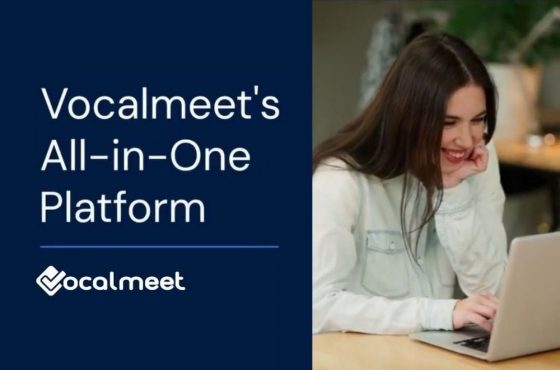Why Associations Should Consider Multi-Channel Marketing Campaigns
By Dr. Laurelle Jno Baptiste
Today’s online consumers report that ads are more pervasive, more plentiful, and more intrusive than ever before. As a result of years of being bombarded with ads, online users have developed banner blindness, the subconscious ability to ignore banner ads. While many believe this is only relevant to certain ad placement, it goes much further than that. According to a survey administered by Goo Technologies, 82% of Americans ignore all online ads, regardless of location. For online marketers, that’s a troubling statistic.
Online marketing changes all the time, but there are rarely philosophical shifts in regards to how ads are created. Sure, ads have become more intelligent and personalized, but the vast majority are still one-off advertisements hoping to catch consumers at the right place and the right time. Well, multi-channel marketing or omnichannel marketing is looking to move beyond hope. This new wave of online marketing looks to create multiple advertising touch-points spread across various channels, all connected in one cohesive campaign. The results from these multi-channel campaigns have been incredible, but, surprisingly, few organizations are taking advantage of the advertising strategy.
Here are the main reasons Why Associations Should Consider Multi-Channel Marketing Campaigns.
1. Avoid Being Avoided
As consumers are becoming more blind to online ads, marketers need to find new ways of capturing interest. Each online channel, whether it is through Facebook, Twitter, video, or on a mobile device, demands a different type of interaction and engagement. Multi-channel marketing is much more than simply increasing the number of touch points. It is about customizing each touch point based on the channel it is on. By itself, this customization captures and challenges the consumer’s eye more than the standard ad. Together, as part of a larger cohesive campaign, the ad elevates.
When a multi-channel marketing campaign starts with a strong central idea, the individual ads all benefit from it. Each ad contributes to stronger brand recognition, but each ad also contributes to a larger message. Some associations may use a common color theme or slogan, whereas others may use a different device to connect the campaign. If the ads are consistent and connected, they can become an effective and memorable platform. In a small way, these interconnected touchpoints demand a level of problem-solving from the consumer which has a lasting and impressionable effect.
2. Spend Marketing Dollars More Wisely
Online marketers understand and accept that most ads are ignored and forgotten. The goal of multi-channel marketing is to create several standalone ads that are integrated into a larger common theme. This integration creates a cohesive, unified message. According to Kantar Millward Brown, these integrated campaigns are up to 31% more effective at building brands than the alternative. This is because, even though they may seem more complex, integrated campaigns use various visual and audio cues to trigger consumer recognition. The more recognizable an ad is the more memorable and effective it is.
There is another level to multi-channel marketing that makes it even more impressionable: customization. As discussed, the most effective multi-channel marketing campaigns are also customized to the different channels. As a whole, an integrated and customized marketing campaign catches the consumers interest in specific ways depending on the channel it is viewed on. Kantar Millward Brown’s study on multi-channel marketing suggests that campaigns that are both integrated and customized perform up to 57% more effectively than those that are not. This is because each touchpoint is not only performing at the optimal levels of effectiveness as a channel-specific ad, but they are also part of a larger campaign.
3. The Time is Right
Multi-channel marketing online is right on time. For one of these campaigns to be most effective, the customization on each channel must be optimized and the entire strategy must be integrated. Well, we know that consumers are no longer one channel users. In fact, millennials are often considered challenging targets for marketers because they utilize so many different channels. By targeting each channel and customizing ads based on how users interact with that channel, multi-channel marketing will become associated with this modern channel-surfing behavior.
Additionally, we know how users interact within each channel, meaning true and proper personalization and customization can be created. We know our consumers and how they consume, and we understand the technology. Finally, many of the different channels are being used more than ever before or ever again. It’s time that knowledge was put to use. This is the time to jump in and create a multi-channel marketing strategy.
4. More Accurate Data
For online marketers, multi-channel marketing has one major advantage over traditional marketing that might be the most beneficial: more accurate response data. Currently, simple push marketing provides associations with information about the consumer’s actions that is more about the channel than it is about the ad or the user. Since ads are not customized or varied between channels, marketers expect consumers to react and respond to each ad within each channel the same across the board. But we have the consumption data about each channel and know that isn’t the case.
Multi-channel marketing provides data that tells marketers exactly how an ad on that specific channel is performing. If one ad in the campaign is struggling, marketers can fix it or eliminate it based on the data provided. As consumer data becomes more effective, so too does multi-channel marketing. Furthermore, the current targeted ad technology in combination with multi-channel marketing allows marketers to create ads that are so customized and personalized that the consumer’s actions will be about as detailed and accurate as it gets. In advertising, knowing exactly where your possible consumers stand is half the battle.



